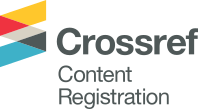Submissions
Submission Preparation Checklist
As part of the submission process, authors are required to check off their submission's compliance with all of the following items, and submissions may be returned to authors that do not adhere to these guidelines.-
It is necessary to provide information about all authors, including:
Email address;
Position, academic degree, title (if any);
Organization;
ORCID.
One author has been designated as the corresponding author.
-
All necessary files have been uploaded:
- Manuscript;
- Include keywords;
- All figures (include relevant captions);
- All tables (including titles, description, footnotes);
- Supplemental files (where applicable).
Ensure all figure and table citations in the text match the files provided. -
Further considerations:
- Manuscript has been 'spell checked' and 'grammar checked';
- All references mentioned in the Reference List are cited in the text;
- Permission has been obtained for use of copyrighted material from other sources;
- Referee suggestions and contact details provided, based on journal requirements.
Copyright Notice
You are free to: Share — copy and redistribute the material in any medium or format. Adapt — remix, transform, and build upon the material for any purpose, even commercially.
Eurasian Chemico-Technological Journal applies a Creative Commons Attribution 4.0 International License to articles and other works we publish.
Subject to the acceptance of the Article for publication in the Eurasian Chemico-Technological Journal, the Author(s) agrees to grant Eurasian Chemico-Technological Journal permission to publish the unpublished and original Article and all associated supplemental material under the Creative Commons Attribution 4.0 International license (CC BY 4.0).
Further distribution of this work must maintain attribution to the author(s) and the published article’s title, journal citation, and DOI.
Privacy Statement
The names and email addresses entered in this journal site will be used exclusively for the stated purposes of this journal and will not be made available for any other purpose or to any other party.









